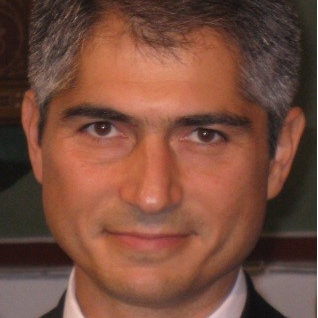Single Crystals for Biomedical Applications
A special issue of Crystals (ISSN 2073-4352).
Deadline for manuscript submissions: closed (30 June 2019) | Viewed by 12252
Special Issue Editor
Special Issue Information
Dear colleagues,
Single crystals, either organic or inorganic, have already been used in a wide range of biomedical applications (transducers, sensors, scintillators, wavelength shifters, etc.). Their unique properties have been applied or suggested for use in a huge range of medical modalities. Depending on the application, their size can vary from nanometres to few centymetres and they can be cut or molded into any shape to fit the biomedical application. Their electrical characteristics, light yield and density also make them interesting for applications involving imaging and therapy, including ionizing and non-ionizing radiation medical applications (e.g. ultrasonography, X-ray imaging, radiotherapy, etc.). Current trends in multimodality imaging detectors indicate the exploitation of single crystal scintillators in a wider range of energies, covering CT/PET and portal imaging. New single crystal materials with unique electrical and optical properties are fabricated to cover almost any biomedical application.
Due to the variety of research fields in biomedicine where the application of single crystals can improve or even create new applications, the Editorial Board of Crystals has decided to devote a Special Issue of the journal to the analysis of “Single Crystals for Biomedical Applications”.
Being honored to serve as a Guest Editor, I hereby invite all colleagues who work on “Single Crystals for Biomedical Applications” to contribute to this issue. Topics relating to issues such as the efficiency of single crystals, new crystalline materials for biomedical ionizing and non-ionizing radiation applications, under energies covering X-rays, nuclear medicine and radiation therapy, integration of single crystals into medical devices, theoretical calculations, etc., are welcome.
Prof. Dr. Ioannis G. Valais
Guest Editor
Manuscript Submission Information
Manuscripts should be submitted online at www.mdpi.com by registering and logging in to this website. Once you are registered, click here to go to the submission form. Manuscripts can be submitted until the deadline. All submissions that pass pre-check are peer-reviewed. Accepted papers will be published continuously in the journal (as soon as accepted) and will be listed together on the special issue website. Research articles, review articles as well as short communications are invited. For planned papers, a title and short abstract (about 100 words) can be sent to the Editorial Office for announcement on this website.
Submitted manuscripts should not have been published previously, nor be under consideration for publication elsewhere (except conference proceedings papers). All manuscripts are thoroughly refereed through a single-blind peer-review process. A guide for authors and other relevant information for submission of manuscripts is available on the Instructions for Authors page. Crystals is an international peer-reviewed open access monthly journal published by MDPI.
Please visit the Instructions for Authors page before submitting a manuscript. The Article Processing Charge (APC) for publication in this open access journal is 2600 CHF (Swiss Francs). Submitted papers should be well formatted and use good English. Authors may use MDPI's English editing service prior to publication or during author revisions.
Keywords
- single crystals
- biomedical applications
- inorganic–organic single crystals
- scintillators
- tranducers
- nanocrystals





